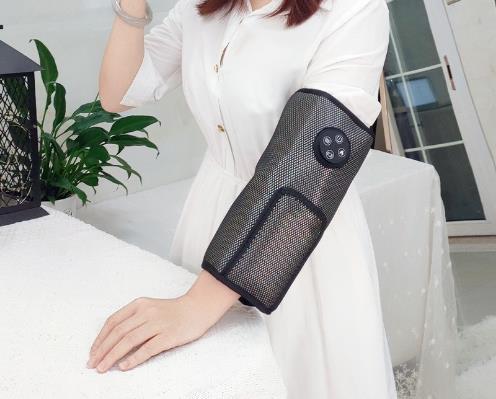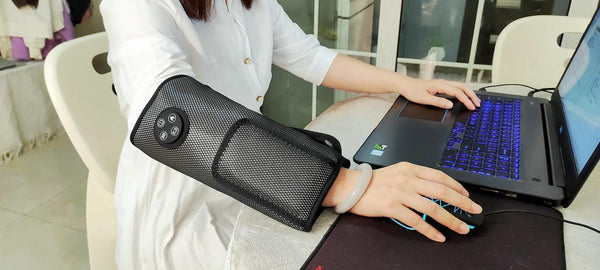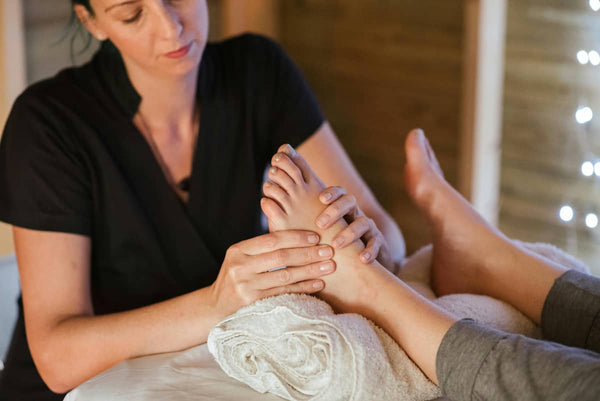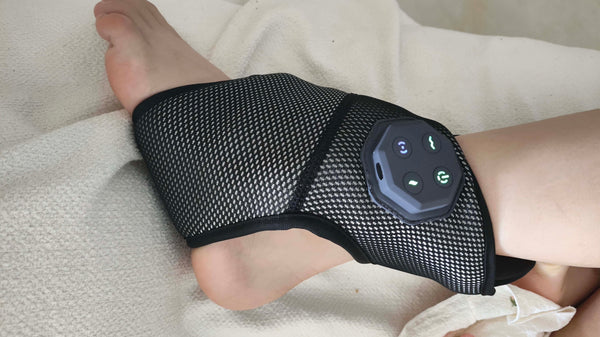
You push your limits in the gym, on the trail, and on the field. You chase that feeling of accomplishment, that burn that signals growth. But what happens after the last rep? The real battle for progress is fought in recovery. For years, the debate has raged: do you stick with tried-and-true traditional tools, or do you embrace the power of a modern massage device? Let's cut through the noise and figure out what your body truly needs to bounce back stronger and faster with the right massage device.
Why Your Muscles Scream for Recovery After a Workout
That familiar post-workout ache has a name: Delayed Onset Muscle Soreness (DOMS). It’s the result of microscopic tears in your muscle fibers—a natural part of getting stronger. But how you manage this phase is critical. Ignoring it can lead to performance plateaus, chronic tightness, and even injury. Proper recovery isn't just about resting; it's an active process of helping your muscles repair and rebuild. This is where a recovery tool like a modern massage device enters the picture, promising to speed up the process and get you back to 100% with a reliable massage device.
Traditional tools like foam rollers and lacrosse balls have been the go-to for years. They work on the principle of myofascial release, applying broad pressure to break up knots and improve flexibility. They're accessible, but let's be honest—rolling around on the floor is awkward and often fails to hit those deep, specific trigger points. This limitation has paved the way for a more advanced solution: the targeted power of a specialized massage device. For many, a quality massage device is a superior choice for effective recovery.
Introducing the Challenger: The Modern Hand Held Massager
 Enter the modern massage device, a sleek, powerful tool designed for precision and efficiency. Unlike the passive pressure of a foam roller, a percussive hand held massager uses rapid, concentrated pulses to dive deep into muscle tissue. Think of it as a targeted jackhammer for your knots. This technology, found in every good deep tissue massager, isn't just a gimmick; it's a direct response to the shortcomings of older methods, making it a highly effective massage device. A quality massage device offers a way to deliver relief exactly where you need it, without the hassle.
Enter the modern massage device, a sleek, powerful tool designed for precision and efficiency. Unlike the passive pressure of a foam roller, a percussive hand held massager uses rapid, concentrated pulses to dive deep into muscle tissue. Think of it as a targeted jackhammer for your knots. This technology, found in every good deep tissue massager, isn't just a gimmick; it's a direct response to the shortcomings of older methods, making it a highly effective massage device. A quality massage device offers a way to deliver relief exactly where you need it, without the hassle.
These devices are built for the modern fitness enthusiast. A good hand held massager is portable, rechargeable, and often comes with a variety of attachments designed for different muscle groups. This versatility means you can give your quads, hamstrings, and shoulders the specific attention they need with a single massage device. It’s about taking control of your recovery with a tool as serious about performance as you are. It’s a really, really powerful concept when you think about it: having a professional-grade massage device in the palm of your hand.
The Science of Speed: How a Deep Tissue Massager Works
So, what's the magic behind a deep tissue massager? It’s all about vibration and amplitude. The head of this type of massage device oscillates back and forth, delivering thousands of percussions per minute deep into the muscle. This action does a few incredible things. First, it dramatically increases blood flow to the targeted area, flooding your muscles with oxygen and nutrients. Better circulation also means faster removal of metabolic waste products, which is a key benefit of any good massage device. This makes the massage device an invaluable tool for any athlete.
Second, the intense vibration helps to down-regulate the nervous system, telling overactive, tight muscles to relax. This can provide immediate relief from stiffness and improve your range of motion. For athletes, this ability to pinpoint and release deep-seated knots is a total game-changer. The targeted relief from a deep tissue massager was once only available through a professional who could perform massage deep tissue techniques, but now this technology is accessible to everyone with the right massage device. This makes a home-use massage device a fantastic investment.
- Increases Blood Flow: The primary
- Reduces Muscle Tension: A quality hand held massager can release stubborn knots.
- Enhances Range of Motion: Relieves stiffness for better mobility after using the massage device.
- Accelerates Recovery: A deep tissue massager preps muscles and aids cool-downs.
How to Use a Massage Device for Optimal Relief
Owning a powerful tool is one thing; knowing how to use it is another. To get the most out of your massage device, you need a strategy. Don't just pummel a sore muscle. Instead, think of your hand held massager as a precision instrument. Using your massage device correctly is key. Start on the lowest setting and gently "float" it over the general muscle area for 30 seconds. This helps warm up the tissue and lets you identify specific points of tension that need more focus from your massage device.
Once you find a trigger point, you can hover on it for 15-30 seconds, but avoid pressing down with excessive force. Let the massage device do the work. Remember to breathe deeply. Avoid using it directly on bones, joints, or your neck. Consistent, smart use of your deep tissue massager is far more effective than an occasional, aggressive session. Integrating this into your routine is the key to sustained performance with any massage device, and it will maximize the benefits you get from your massage device.
- Step 1: Choose the Right Attachment. Your massage device comes with options for a reason.
- Step 2: Start Low and Slow. Always begin on the lowest speed setting of your hand held massager.
- Step 3: Float, Don't Force. Glide the massage device over the muscle. Let the percussions do the work.
- Step 4: Be Patient and Consistent. Regular, short sessions with your massage device are best.
Pro Tips and Avoiding Pitfalls
While a modern massage device is incredibly effective, it demands respect. Some critics rightly warn that excessive use can lead to problems like inflammation or bruising. This is a classic case of "more is not better." The goal of using a deep tissue massager is therapeutic relief, not a pain tolerance test. If you experience sharp pain, you're likely being too aggressive. Listen to your body—it's the best guide for using any massage device correctly and safely.
The smartest approach, as many therapists suggest, is to choose a massage device that gives you maximum control. Look for a hand held massager with multiple, easily adjustable speed and intensity settings. This allows you to tailor the treatment from your massage device to different muscle groups and sensitivity levels, which is crucial for preventing the kind of overstimulation that can lead to minor nerve irritation. A quality massage device with ergonomic design ensures you’re getting the benefits without the risks.
The verdict is in. This isn't about traditional tools vs. a modern massage device. It's about evolution. While foam rollers still have their place, the precision and power of a high-quality deep tissue massager offer a clear advantage for any fitness enthusiast. When used correctly, a good massage device is not just a tool for pain relief—it’s an investment in your body's longevity and your athletic potential. Choosing the right massage device is choosing smarter recovery.
Frequently Asked Questions
What is massage deep tissue?
Massage deep tissue is a type of massage therapy that focuses on realigning the deeper layers of muscles and connective tissue. It is especially helpful for chronically tense areas. The movement is slower and the pressure is deeper and concentrated on areas of tension. A deep tissue massager aims to replicate this effect by using rapid percussions to penetrate those same deep muscle layers, making the benefits of massage deep tissue more accessible at home.
Can electric massagers cause nerve damage?
This is a valid concern. When used correctly, an electric hand held massager is very safe. However, there is a potential risk of irritating superficial nerves if the massage device is used improperly. To prevent this, avoid using the massager directly on bones, joints, the front of the neck, or the spine. Start on the lowest setting and never apply excessive pressure. Choosing a high-quality massage device with adjustable strength allows you to customize the intensity, effectively preventing nerve issues by ensuring the pressure from your massage device is therapeutic, not harmful.
Is it normal for my back to hurt after a massage?
It can be normal to feel some soreness after a session of massage deep tissue, whether from a therapist or a device. This is often because the massage is working muscles that are not used to being manipulated so intensely. This feeling, similar to post-workout soreness, should subside within a day or two. However, if you experience sharp or intense pain after using a massage device, you should stop. This could indicate that the pressure from your massage device was too intense. Always listen to your body.




0 comments